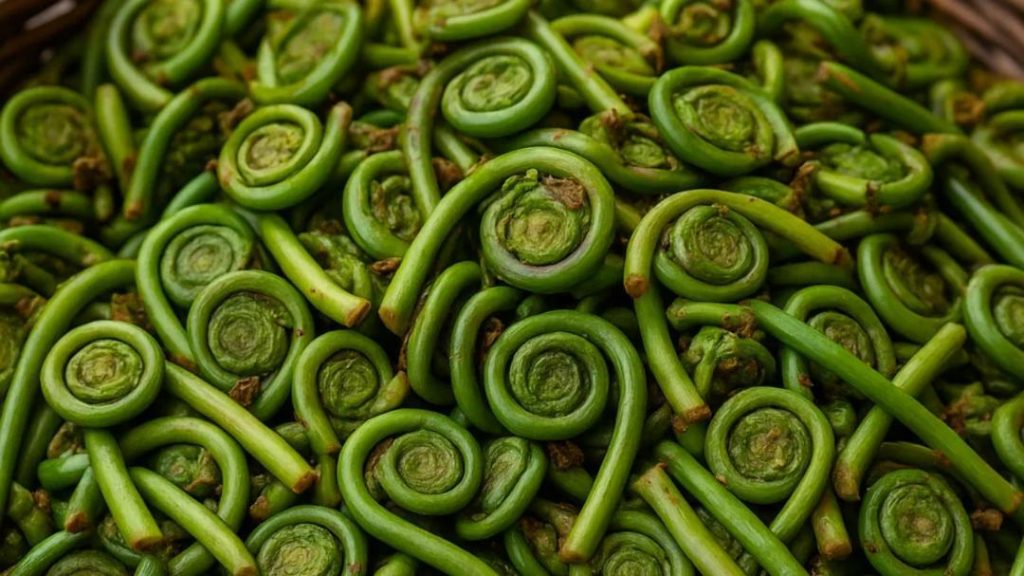
Lingad, a Monsoon Fern, Boosts Immunity and Bone Health
In the lush, green valleys of the Himalayas, during the monsoon season, a unique and flavorful ingredient is foraged to add a burst of nutrition and flavor to various traditional dishes. This ingredient is none other than the Lingad, also known as the fiddlehead fern, Diplazium esculentum. For centuries, the locals have been using this wild, edible fern in their cuisine, not only for its distinct taste but also for its numerous health benefits.
What is Lingad?
Lingad is the young, coiled shoot of the Diplazium esculentum fern, which is native to the Himalayan region. It is also known as Lengdu, Dhekia, or Nigro locally. The Lingad is harvested when it is still tender and curled, before it matures and becomes fibrous and unfit for cooking. This young, delicate shoot is densely packed with nutrients, making it a prized ingredient in many traditional recipes.
Traditional Use and Preparation
In the Himalayas, Lingad is a staple ingredient in many local dishes, particularly during the monsoon season. The tender shoots are typically gathered from the wild and then cleaned, washed, and cooked with a variety of spices and ingredients to bring out their unique flavor. Lingad is often used in soups, stews, and stir-fries, and is also dried or preserved for use throughout the year.
Health Benefits of Lingad
Lingad is not only a flavorful ingredient, but it is also packed with nutrients and offers numerous health benefits. Some of the key benefits of including Lingad in your diet include:
- Boosts Immunity: Lingad is rich in antioxidants and vitamins A and C, which help to boost the immune system and protect the body against infection and disease.
- Supports Bone Health: Lingad is an excellent source of calcium, magnesium, and other minerals, which are essential for maintaining strong, healthy bones.
- Rich in Fiber: Lingad is a good source of dietary fiber, which can help to regulate digestion, prevent constipation, and support healthy blood sugar levels.
- Anti-Inflammatory Properties: Lingad contains anti-inflammatory compounds that may help to reduce inflammation and alleviate symptoms of conditions such as arthritis and other inflammatory diseases.
How to Incorporate Lingad into Your Diet
If you’re interested in trying Lingad, you can find it in some health food stores or specialty markets that carry fermented or dried fiddlehead ferns. You can also try foraging for it in the wild, if you have access to the Himalayan region during the monsoon season.
Here are some tips for incorporating Lingad into your diet:
- Use it in soups and stews: Add Lingad to your favorite soups and stews for a burst of flavor and nutrition.
- Stir-fry it with vegetables: Stir-fry Lingad with your favorite vegetables, such as bell peppers, onions, and mushrooms, for a quick and easy dinner.
- Add it to salads: Use dried or fermented Lingad as a garnish for salads or add it to your favorite salad recipe.
- Make a tea: Steep dried Lingad in hot water to make a soothing and nutritious tea.
Conclusion
Lingad, the wild fiddlehead fern, is a unique and flavorful ingredient that offers numerous health benefits. From boosting immunity and supporting bone health to being rich in fiber and anti-inflammatory compounds, Lingad is a nutrient-dense ingredient that can be incorporated into a variety of dishes. Whether you’re foraging for it in the wild or finding it in a health food store, Lingad is definitely worth trying.
Source:






